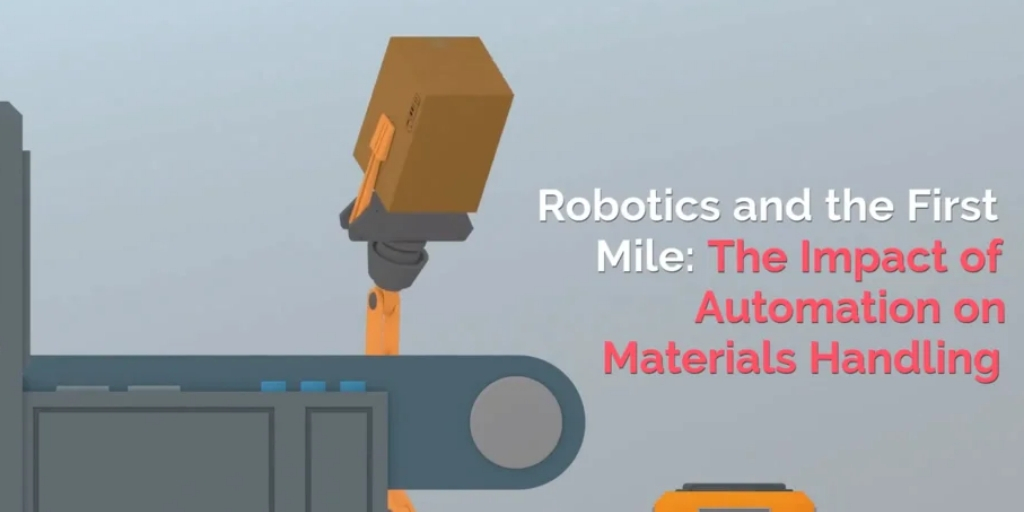As automation technologies become increasingly sophisticated, companies throughout the supply chain are realizing the beneficial impact of automation on materials handling.
Highlights:
- Manufacturers of automation technologies are predicted to grow significantly over the next 5 years.
- Automating the “first mile” of the supply chain helps reduce labor challenges and leads to increased productivity.
- Robotics technologies offer greater capacity for data collection, facilitating informed process decisions.
While the impact of automation on the “last mile” of the supply chain is often the subject of public interest, automation in the “first mile” deserves just as much attention. Advanced robotics are increasingly ensuring accuracy — while minimizing or even eliminating human involvement in various processes — at every stage of the supply chain. Industry experts are predicting an ever-growing impact of automation on materials handling, with companies reaping the benefits up and down the supply chain.
Particularly in the materials-handling sector, human capital is increasingly difficult to recruit and maintain. Additionally, labor costs in global markets such as India and China are rising. Naturally, companies are increasingly inclined to replace or redeploy human labor, with the help of automated material-handling systems.
Not to mention, the increasing sophistication of machine-learning capabilities or AI within available automation technologies allows for even greater productivity. And there’s strong reason to believe that we’re only seeing the beginning of what automation can do. Vendors who create these technologies are investing heavily in R&D, aggressively attempting to expand their product offerings to meet specific industry demands while complying with the complex standards and regulations in place.
Quantifying the costs and impact of automation on materials handling
The robust growth in the robotics-equipment-manufacturing sector demonstrates that the materials-handling industry is investing in automation. Thanks to the demand for high-performance robotics systems, New Equipment Digest (NED) predicts that within the materials-handling-equipment sector, the robotics segment will grow by over 8%, reaching $20 billion by the year 2024. The overall material-handling-equipment market is expected to surpass $190 billion by the same year, according to a growth forecast report by Global Market Insights, Inc.
“Growing automation capabilities in the manufacturing space coupled with increasing penetration of advanced technologies, such as IoT, RFID, and AI, are expected to drive the material-handling-equipment market growth,” predicts the NED. These technologies are already increasing productivity and throughput in the materials-handling sector and reducing the potential for human error. The predicted growth in the manufacturing of robotics equipment points to the increasingly positive impact of automation supply chain-wide.
Of course, automation is not without its challenges. Companies face technical issues involved in implementation, not to mention the large capital outlay required to invest in costly equipment and technologies. With increased technical sophistication and network utilization, there are threats to cybersecurity, requiring companies to invest in measures to protect their technology.
Robotics-equipment manufacturers recognize that while automation offers significant benefits for materials handling, companies need to study potential impact before making these costly investments.
Many manufacturers are offering tools for quantifying the impact of automation on materials handling. OTTO Motors, a manufacturer of self-driving-vehicles, offers an ROI calculator, allowing potential buyers the opportunity to receive an easy ROI estimate. Manufacturers are also increasingly offering simulations of materials-handling systems, allowing potential customers to determine efficacy, test designs, and study new procedures without disrupting operations.
Realizing the benefits of automation for materials handling
Beyond the well-known benefits, such as decreased costs and increased productivity, automating materials-handling processes can offer a variety of additional advantages to companies’ first-mile operations. In fact, streamlining these processes and reducing costs has its own positive repercussions throughout a company’s operations, as it allows for increased speed, productivity, and accuracy operation-wide.
[bctt tweet=”Automating materials-handling processes has its own positive repercussions throughout a company’s operations, as it allows for increased speed, productivity, and accuracy operation-wide.” username=”Fronetics”]
Additional benefits of automating materials handling include:
- The access to real-time data provided by automated technologies allows for more complete Key Performance Indicators (KPIs).
- Labor shortages and high turnover are some of the primary challenges in materials handling – automation shields manufacturers from these challenges, while allowing human labor to be repurposed into more intricate tasks.
- Implementing technology in the materials-handling phase of the supply chain can connect to other automated processes within the factory.
- The availability of data and the ability to leverage it allows adjustments to be made in real time, meaning more flexible manufacturing.
The bottom line is that, while it can be costly at the outset, automation at the front end of the supply chain, namely materials handling, offers rich and diverse benefits sector-wide.
Related posts:


